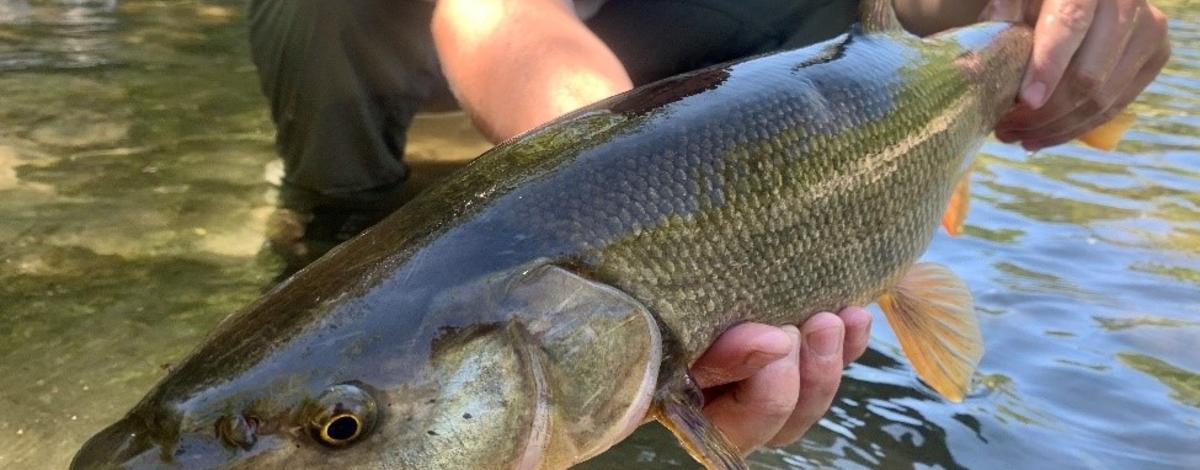When it comes to identifying their catch, most anglers know their fish, especially their game fish. While the novice angler might still struggle with differentiating a brook trout from a bull trout, a bluegill from a pumpkinseed, or a smallmouth from a largemouth bass, the majority of anglers are well versed in knowing the more popular species. But what about those less popular game and non-game fish that might end up on the end of your line? It is these less frequently encountered species that often lead to phone calls or social media posts asking, “what is this fish?” Below are some of the more commonly misidentified fish species swimming in the waters of southwest Idaho.
Mountain Whitefish: The mountain whitefish remains one of the least known native game fish in the region. Its lack of coloration, larger scales, and small mouth lead a lot of anglers to think that whitefish are a sucker or large minnow, when in fact, they are part of the salmonid family (the same as salmon and trout). These fish are one of the most widely distributed salmonids in North America and can be found in most coldwater rivers and streams (as well as in some reservoirs) and can grow to trophy sizes in excess of 20 inches. They are easily identified by their small, toothless mouth and the presence of an adipose fin (the small fin on their back between their dorsal fin and tail).

Green Sunfish: Crappie, bluegill, and to a lesser extent, pumpkinseed are all common panfish found in southwest Idaho. However, another introduced (likely via aquarium releases) panfish, the green sunfish, is becoming more common. Found mainly in the Snake, lower Boise, and lower Payette rivers, the green sunfish is a game fish identified by its more elliptical body (think more bass shape than bluegill shape), blue-dotted stripes, and yellowish to white fin tips and edges.
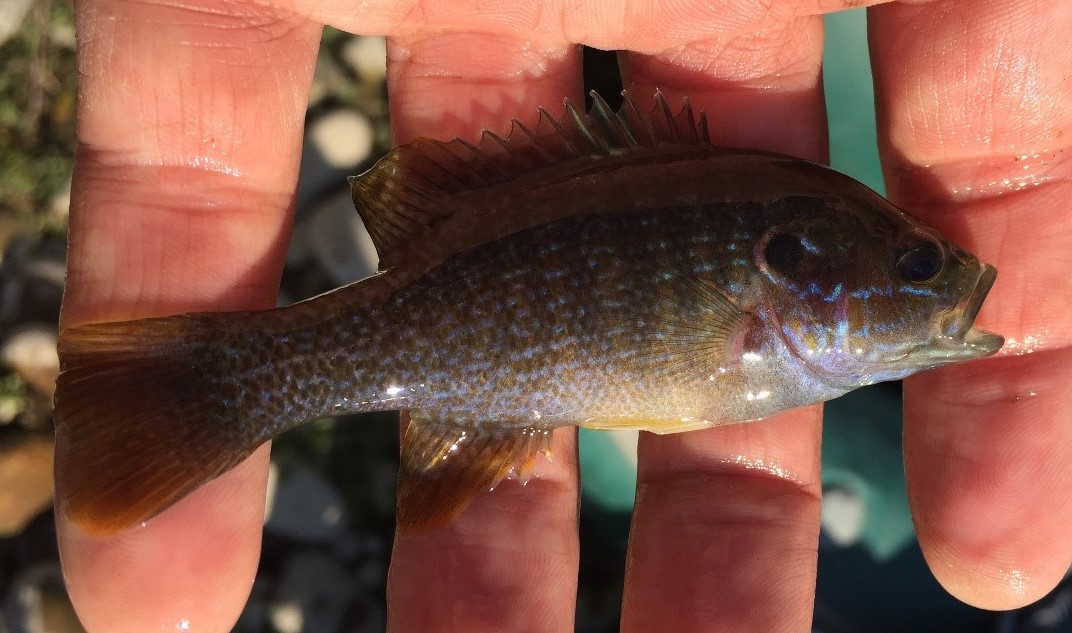
Warmouth: Another non-native fish in the sunfish family that remains rare, yet widely distributed in the middle Snake River, is the warmouth. Also a game fish, a warmouth resembles a cross between a crappie and a bass with a mottled dark brown coloration. Lateral stripes from the eye to the back of the operculum (gill covering) and red coloration of the outer eye are helpful identifiers of this species.
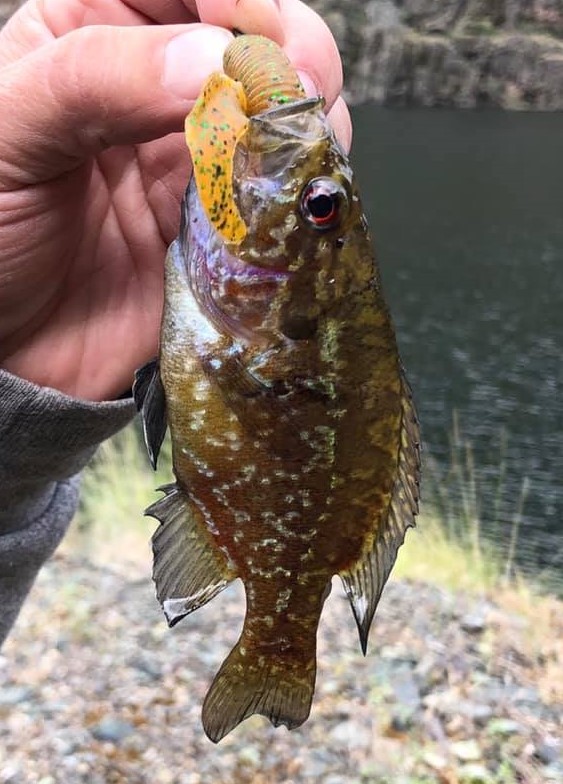
Northern Pikeminnow: The pikeminnow might very well hold the record as the most frequently inquired about fish species in Idaho. These native fish are aggressive feeders, which leads to them often ending up on an angler’s hook. They are also widely distributed across Idaho’s low elevation rivers and reservoirs, adding to their encounter rate. A member of the minnow family, pikeminnow are generally yellowish green in color and have a deep forked tail. Their mouth is often described as a “duck-like” and is wide, squared, toothless, and extends back near the fish’s eye. Pikeminnow lack an adipose fin.

Largescale Sucker: There are a handful of sucker species in southwest Idaho, but the largest (and seemingly most encountered by anglers) of these species is the largescale sucker. Adult largescales can exceed 20 inches. These native fish are found in all but the highest, coldest waters in the region and are common to both rivers and reservoirs. Easily identified from other non-game species by their large downturned mouth designed for suction feeding, differentiating largescale suckers (especially smaller ones) from other sucker species takes a bit more of a trained eye. Mouth structure and the number of dorsal fin rays are the best species-specific differentiators among sucker species.

Sculpin: Another native nongame fish, sculpin are small, bottom dwelling fish that prefer cold, flowing water. Anglers fishing along the bottom of faster flowing waters will occasionally encounter a sculpin. While there are numerous species of sculpin living in southwest Idaho, they are difficult to distinguish from one another and look very similar. Sculpin are small with adults usually not getting over 5 inches in length. Their wide heads, large fins, small size, and distinct brown blotched color pattern make them easy to identify.
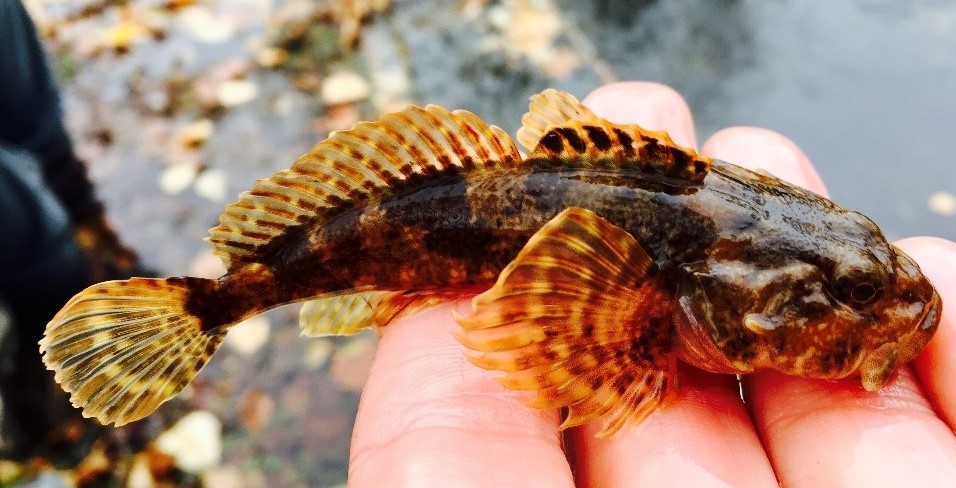
Chiselmouth: A type of minnow, the chiselmouth is another silvery, mid-sized native warm water fish that often confuses anglers. Named for the hard, sharp plate on its lower jaw, this feature is the fish’s easiest identifier. These fish prefer warmer, running water but can occasionally be found in reservoirs. Large chiselmouths rarely grow over 12 inches in length and lack an adipose fin.
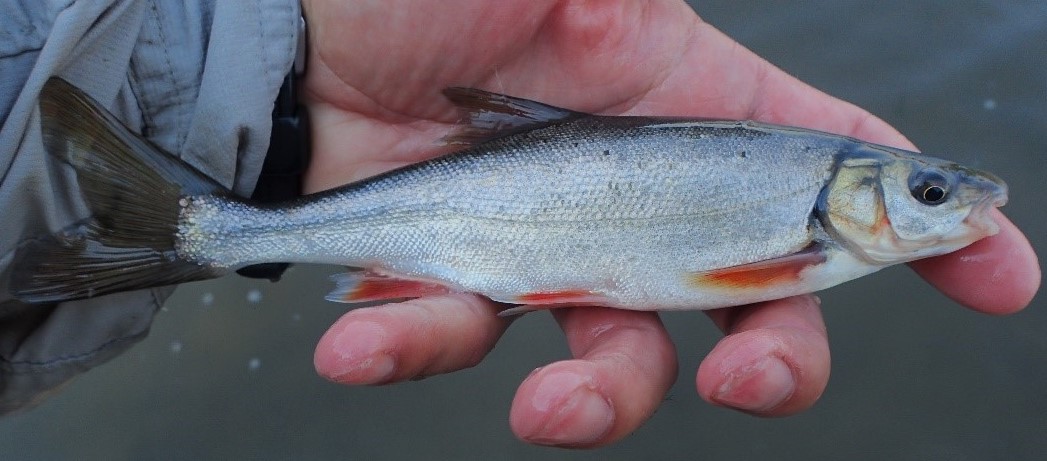
Peamouth: Yet another native minnow species that is sure to confuse those that reel one in, is the peamouth. This slender, forked tail fish has large eyes, a downturned mouth, and more distinct coloration than some of the above mentioned fish. Peamouth prefer warmer, slow-flowing or still water and typically have a darker body and a contrasting white belly. They will also develop red coloration between their upper and lower body during spawning. Unlike pikeminnow, peamouth have a smaller rounded head with a small mouth. Like other minnow species, peamouth lack an adipose fin.
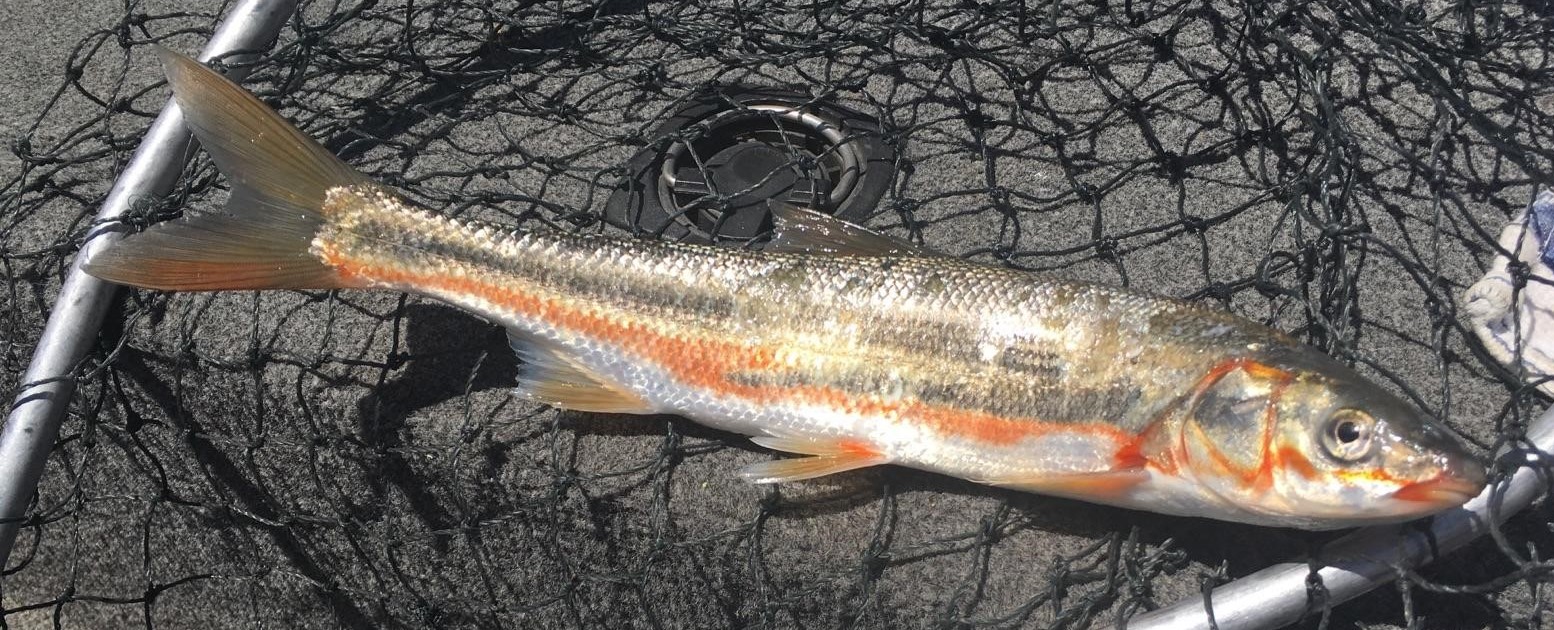
Weather Loach: The only fish in this article that is both non-native and non-game, the weather loach is rarely caught on a hook and line. This fish is often encountered in drying canals and ditches, resulting in numerous calls. These long slender fish are often misidentified as eels or lamprey. However, they are a common aquarium loach that, through illegal introductions, have become well established in the canal system throughout the Treasure Valley. They are easily identified by their long, slender, eel-like body and barbels (whisker-like structures) around their mouths.
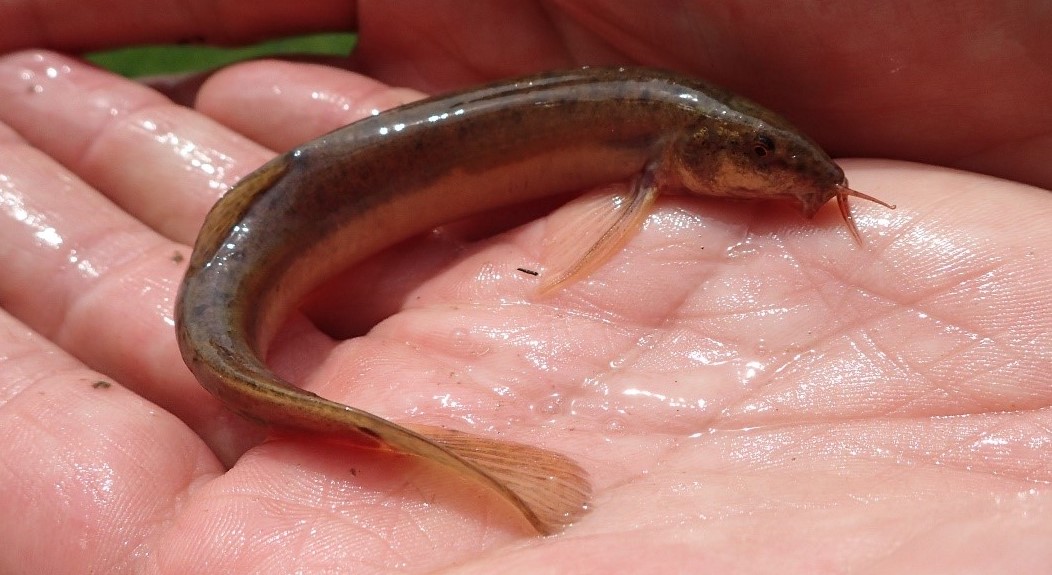
This list only includes the fish that we are most frequently asked about in southwest Idaho. There are many other species of fish in local waters from common native species to rare introduced species. If you catch a species of fish you can’t identify while fishing in Idaho, your safest bet is to let it go. However, photos are always encouraged so that you can reach out to IDFG or use one of the many online resources to help identify your catch and become a more informed angler. If you catch something that you think shouldn’t be in the water you are fishing, contact your local IDFG office.

